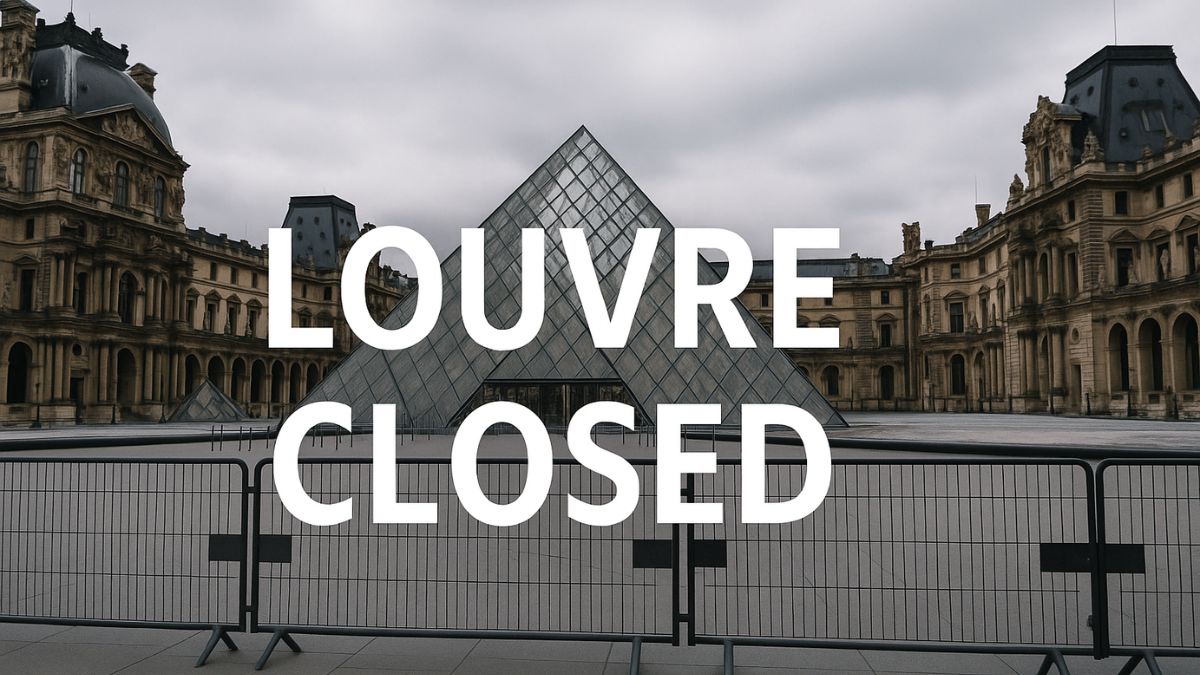New York: It seemed like any other Monday morning at Paris’s Louvre—until it wasn’t. Thousands of eager visitors, many clutching Mona Lisa–dwelling dreams, suddenly found themselves stranded outside the iconic glass pyramid on June 16, 2025. No show, no warning, just hotel‑level queues and confusion buzzing in the spring air.
Behind the calm facade, frontline staff—gallery attendants, ticket agents, security—had stopped working. What began as a routine staff meeting quickly morphed into a spontaneous walkout, with workers protesting unbearable crowd pressure, chronic understaffing, and failing infrastructure.
It’s a reminder that even the world’s most‑visited museum (8.7 million annual guests in 2024) is feeling the strain of a mass‑tourism overload. But this isn’t just a Paris story—it’s a wake‑up call to us all about the future of travel and culture.
Inside the Louvre Closed Strike — What Employees Reveal
Museum staff say Tuesday’s shutdown wasn’t planned—it erupted during an “emergency internal meeting” when workers refused to return to their posts. The reasons? Overcrowded galleries, outdated facilities, overheating under the pyramid’s greenhouse effect, and a lack of bathrooms and rest areas.
“It’s the Mona Lisa moan out here,” joked one stranded visitor—yet behind the slogan is real frustration. Staff describe their working routines as “untenable,” citing hurried entry lanes, hectic crowds, and art at risk from unstable temperature and humidity.
Also Read: Where Is Tulum? Why This Hidden Gem Is on Everyone’s Travel Bucket List
Mass Tourism Impact on Louvre Museum Experience
The Mona Lisa garners nearly 20,000 daily visitors—transforming art into a blur of elbows, selfies, and heat. Yet the infrastructure, built for far fewer guests, is buckling—leaks, sweltering galleries, and crumbling HVAC systems have become daily headaches.
With a cap of 30,000 entries per day since 2022, the Louvre has tried crowd control—but still operates at more than double its original capacity. The museum is a cautionary tale of how popularity can outpace preparedness.
Macron’s “New Renaissance” Plan vs. Today’s Reality
In January 2025, President Macron unveiled a €700–800 million overhaul—including a dedicated room for the Mona Lisa and a Seine‑side entrance by 2031. But while big‑picture renovation looms, employees say the problems are here now.
Staff argue the reforms came too late. A 20% drop in operating subsidies over the past decade left a funding gap as visitor numbers surged. Workers say they can’t wait six years—for their own sake and for art preservation.
What Louvre Closed Means for Travelers & Art Lovers
If you were planning a Louvre visit this week: Monday is effectively canceled. A limited “masterpiece route” may open later, and normal operations may resume Wednesday. Tuesday remains a regular closure day for the museum.
Looking ahead, expect:
- Delayed reopening, potential refund or rerouting options
- Refurbished visitor amenities over the next several years
- Ticketing changes—especially timed access to hot‑ticket works like the Mona Lisa
Could This Happen to Other Attractions? The Broader Overtourism Trend
From Venice to the Acropolis, popular destinations are seeing protests, local pushback, and crowd limits. The Louvre strike joins a wider movement pointing to one critical theme: sustainable tourism isn’t optional—it’s essential.
Cities and heritage sites worldwide will need smarter crowd management, better staff conditions, and infrastructure that can handle the love—without cracking under it.
The Louvre isn’t just a cultural icon—it’s ground zero for a global reckoning on how we travel today. The sudden closure reveals a tension between universal access and preservation, between employee well‑being and guest experiences. For arts‑loving people who crave authenticity but value ethics, this is a moment to rethink what “seeing the world” really means—and how we want to do it.







